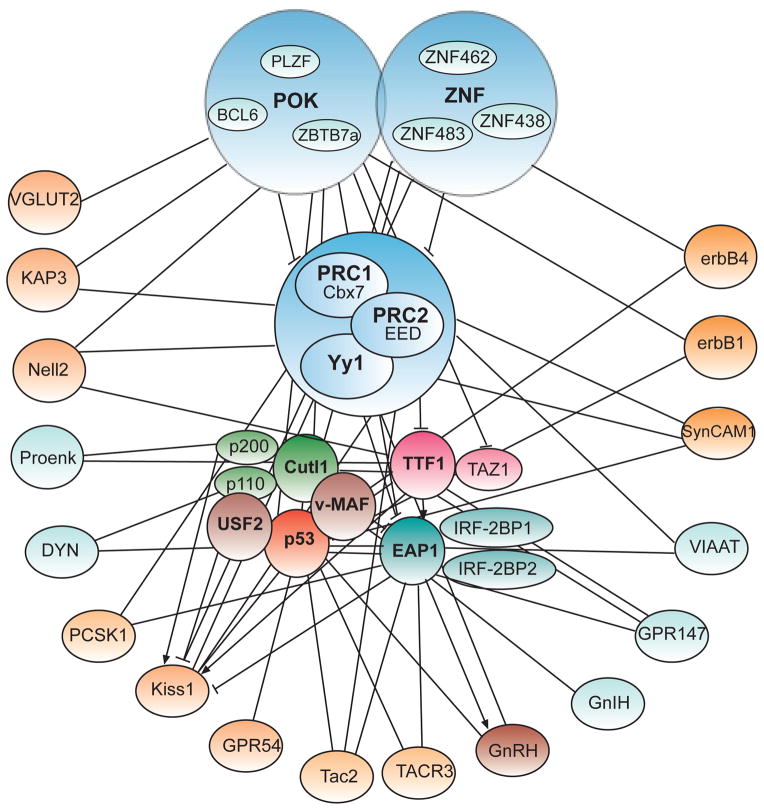Figure 3.
Key features of the TRG network. Two modules composed of different types of transcriptional regulators are postulated to be strongly interconnected and to directly control the activity of peripheral nodes via either trans-activational or repressive mechanisms (← = trans-activation; ⊥ = transcriptional repression). In one of these modules, CUTL1 and p53, function as central hubs; in the other, this role is played by TTF1 and EAP1. Both modules regulate the expression of a host of subordinate genes, including puberty activating genes (e.g., KISS1) and genes involved in the inhibitory control of puberty (e.g. opioid peptides, RFRP3/GnIH). The model predicts that the TRG network is subjected to a two-tiered hierarchy of repressive control provided by two modules. One consisting of POK/ZNF genes, would serve are repressor of repressors. The other repressive module is composed of PcG genes. YY1, which in our initial model was considered to be a central TRG node (Roth et al., 2007), can now be assigned to the PcG complex. According to the current model, POK/ZNF proteins repress PcG genes, and in turn PcG proteins repress downstream puberty activating genes. POK/ZNF proteins may also suppress directly downstream genes. Large blue modules = “upstream” transcriptional repressors consisting of three different families of transcription factors; smaller centrally clustered modules of different colors = secondary central modules composed of genetically unrelated genes; peripheral light blue nodes = genes considered to be inhibitory to the pubertal process; peripheral orange nodes = genes considered to be activators of puberty. Lines ending without arrows or blunt ends denote that the nodes are predicted to be connected by in silico analysis (for instance, the presence of transcription factor binding sites in the downstream target gene), but experimental evidence is lacking.

